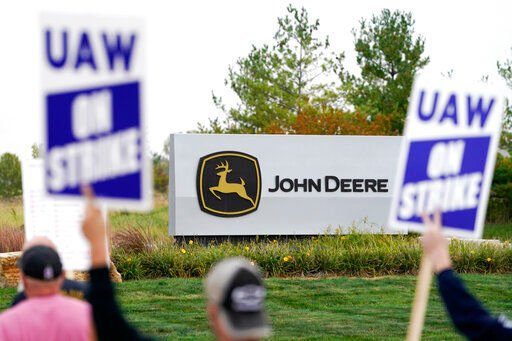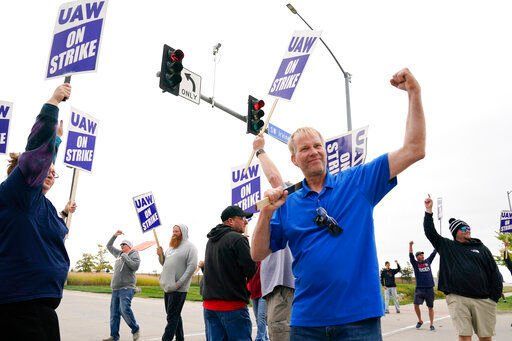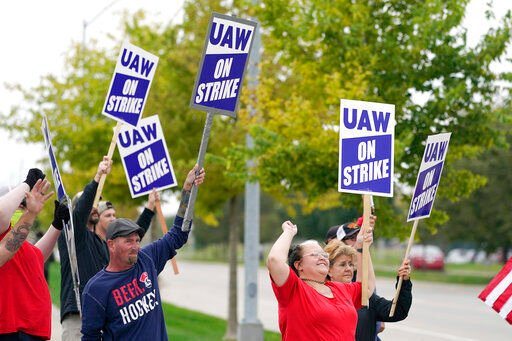More than 10,000 striking Deere & Co. workers were voting Wednesday on a new contract offer from the tractor maker, but this third deal is strikingly similar to a contract that 55% of workers rejected two weeks ago.
The latest proposed contract maintains the 10% immediate raises that the last deal offered, and it makes what the United Auto Workers union called modest changes to the details of Deere’s internal incentive pay program for workers.
After the last vote on Nov. 2, Deere officials told the union not to expect the company to offer any more money, and Deere largely stuck to that promise in this latest offer.
In addition to the initial raises, this week’s offer keeps the 5% raises that were in the third and fifth years of the six-year deal and 3% lump sum payments in the second, fourth and sixth years of the deal. The offer would also provide an $8,500 ratification bonus, preserve a pension option for new employees, make workers eligible for health insurance sooner and maintain their no-premium health insurance coverage.
The contract covers 12 plants, including seven in Iowa, four in Illinois and one in Kansas where the company’s iconic green John Deere agricultural and construction equipment is made. This was the first major strike at the company since 1986.
What Moline, Illinois-based Deere did in this latest offer, which it is calling its final one, was tweak the complicated formula it uses to determine which workers receive bonuses based on whether their team hits certain productivity goals. The changes in the formula could make it easier for workers to qualify for the incentive pay, but there are some Deere workers who aren’t eligible for the bonuses based on the job they do in the company’s factories and warehouses.
The workers who went on strike on Oct. 14 have been holding out for more from Deere, which has predicted it will report record annual profits between $5.7 billion and $5.9 billion when it releases its earnings report later this month. Initially, more than 90% of the workers rejected Deere’s initial offer, but the second vote was much closer after the company essentially doubled the raises it was offering.
Deere workers have had to endure increasingly colder temperatures along the picket lines while trying to get by on the union’s $275 in weekly strike pay or by finding another job.
Company officials have said they are using salaried employees and other workers to try and keep their factories operating during the strike. Other Deere plants globally are also working to pick up work.
Still, Deere workers — and other unions — have been emboldened to ask for more this year because of the ongoing worker shortages and because workers didn’t always feel appreciated while working long hours during the pandemic.
Another group of UAW-represented workers went on strike earlier this year at a Volvo Trucks plant in Virginia and secured better pay and lower-cost health benefits after rejecting three tentative contract offers. Currently, about 1,400 Kellogg’s workers have been on strike since early last month at the company’s four U.S. cereal plants.




